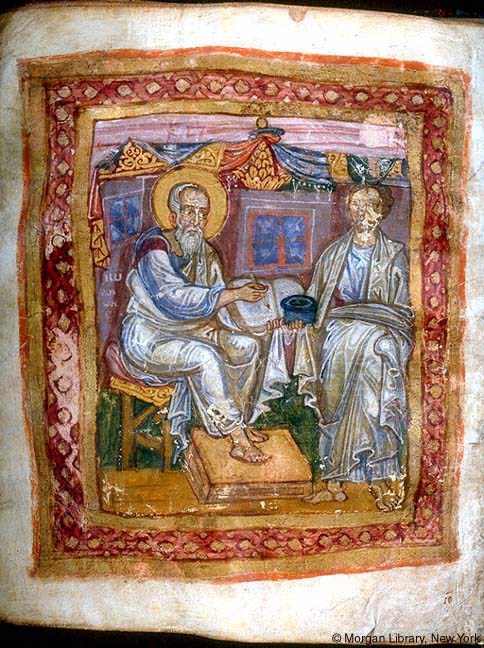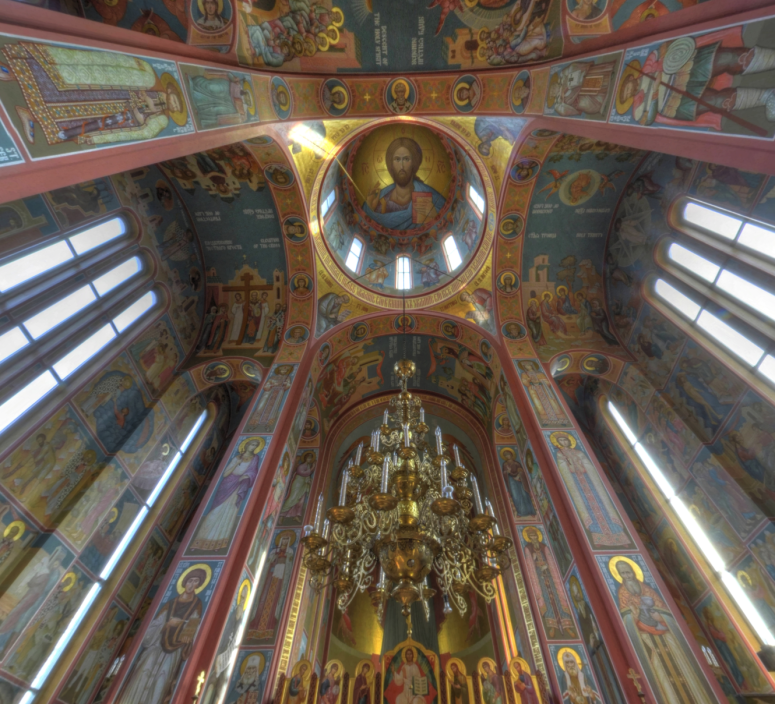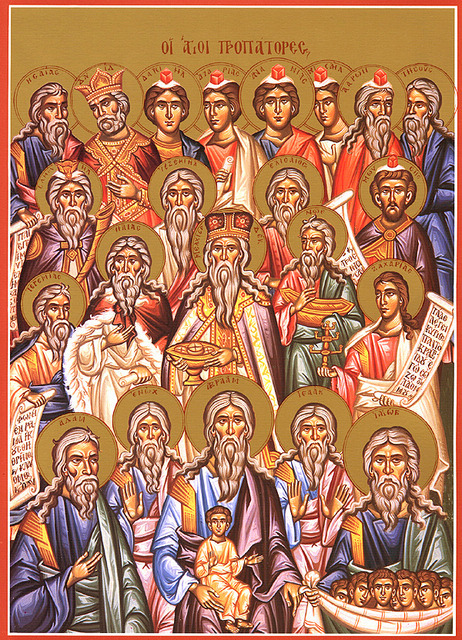 Shown to the right, Marcion of Sinope
The ancient view, preserved in Apostolic Christianity, is that “The Lord saveth his anointed (Psalm 20:6).” That Jesus was the fulfillment of the messianic longing for God to deliver his people (from sin, inequity, and from Babylonian / Roman invasion). Saint Paul, drawing from the Hebrew Bible, writes in Romans, “All Israel shall be saved: as it is written, There shall come out of Sion the Deliverer (Isaiah 59:20), and shall turn away ungodliness from Jacob: For this is my covenant unto them, when I shall take away their sins (Romans 11:26-27).”
Shown to the right, Marcion of Sinope
The ancient view, preserved in Apostolic Christianity, is that “The Lord saveth his anointed (Psalm 20:6).” That Jesus was the fulfillment of the messianic longing for God to deliver his people (from sin, inequity, and from Babylonian / Roman invasion). Saint Paul, drawing from the Hebrew Bible, writes in Romans, “All Israel shall be saved: as it is written, There shall come out of Sion the Deliverer (Isaiah 59:20), and shall turn away ungodliness from Jacob: For this is my covenant unto them, when I shall take away their sins (Romans 11:26-27).”
Saint John Chrysostom provides an ardent reminder to protestants, not to become to sure of our theology, knowledge of scripture, ecclesiology, knowledge of the Holy Fathers, etc. “Not only is it not possible to understand [God’s dispensations] but it is not possible even to begin to inquire into them; it is impossible not only to reach the end, but even to begin to search.” —On the Providence of God, Ch. 2 P.38, commentary on Romans 11. Chrysostom isn’t championing the rejection of study & knowledge (since he is writing about Christianity in exile to his parishioners), but rather coaxing us into an approach to Faith lead by awe, & mystery which modern Christianity is devoid of.
What is my point? God saves whoever He wills, by his own sovereign decree. Romans 11 is a clear cut example of God saving people that explicitly rejected Jesus. Had God not done this, the Hebrew Bible would not be fulfilled in the writings of the prophets, and the church would slide into Marcionism (or Protestantism). I believe this issue is a subtle one but very important. The Orthodox view is that God saves us by his will. The protestant view is that God saves us according to a systematic theology. I.e. if I do this, than God will do that. The problem is that this view of salvation is too small. God can not be confined to the bible, or a system of theology, or our interpretation thereof. He is free do do as He wishes, and as Saint Paul writes in 1 Timothy 2:4, God desires all people to be saved and to come to the knowledge of the Truth. In Protestantism, the question remains, does God accomplish His will?
When you walk in an Orthodox temple, very often there will be icons of the Holy Forefathers and Great Saints of the Old Testament. This is a visual way to preserve the Jewish Tradition in early Christianity, and as a representation against Marcionism. In the feature image, also shown below, the Dome of St. Nicholas Cathedral, the primatial cathedral of the Orthodox Church in America and the seat of Tikhon, Archbishop of Washington, Metropolitan of All America and Canada of the Orthodox Church in America is shown. In each corner are the Apostles of the Gospels, Matthew, Mark, Luke and John with the Holy Forefathers. St. Nicholas Cathedral
Snagged from “A Reader’s Guide to Orthodox Icons“:
St. Nicholas Cathedral
Snagged from “A Reader’s Guide to Orthodox Icons“:In the left bottom corner is Adam, the original forefather of Jesus’ humanity, and all of us. He gestures to the figure in the bottom centre, the Patriarch Abraham, holding a child symbolizing the promise made to him – that even as an old man his progeny would be numbered as the “stars in the sky” and “the grains of sand on the seashore”. To confirm the fulfillment of this prophecy, the child himself gestures to his left, where Abraham’s grandson Jacob stands holding a cloth containing his twelve sons: the Twelve Tribes of Israel. Flanking Abraham is Enoch and Isaac, hands raised in a sign of humility.
Along the top, from left to right, stands the prophet Isaiah, the Psalmist King David, the Prophet Daniel amid the Three Holy Youths, Aaron the Levite, and Joshua. Being well-known for their prayerful attitude and faithfulness to the Torah, the Three Holy Youths, Daniel, and Aaron all wear kippahs topped with phylacteries. Below Aaron is his brother Moses, also wearing kippah and phylactery.
On the left wearing a crown of authority is the last of the Hebrew judges, Samuel. Besides his name being inscribed in his halo, Samuel is easily recognized by the golden horn he holds, used to anoint the first two kings of the nation of Israel: Saul and David.
Below Samuel is Jeremiah, holding a scroll of his own prophecy, as is the Prophet Zechariah on the far right or Jeremiah. Zechariah is also holding the seven-branched Menorah, a common liturgical ornament of the Temple, which this prophet helped to rebuild.
To the right of Zechariah is Righteous Noah, considered a prefiguration of Christ, and holding the Ark of Salvation, a prefiguration of the Mother of God, who held within her our Salvation. To the left of Jeremiah is a prefiguration of John the Baptist: the Prophet Elijah (or Elias in greek). Like the Saint who came after him, Elijah is recognizable by the coat of animal hair which he wears. Another example of an icon of Elijah is here
Flanked by a prefiguration of John the Baptist and the Theotokos on either side, the figure in the centre can only be an Old Testament prefiguration of Jesus Christ. That figure is the “Royal Priest”, the King of Salem, the person who came distributing bread and wine, and the person to whom Abraham, the Patriarch of the Hebrews gave tithes: Melchizedek
 https://iconreader.wordpress.com/2010/12/17/christs-holy-forefathers-the-old-testament-saints/
https://iconreader.wordpress.com/2010/12/17/christs-holy-forefathers-the-old-testament-saints/
Advertisements
Share this:





